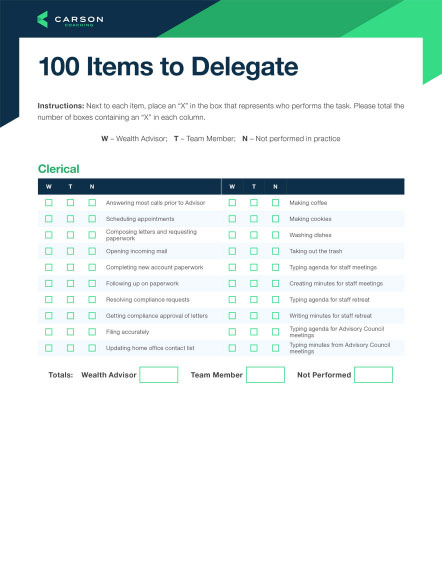You meet a candidate for a position in your firm and absolutely love them. You forgo a deliberate screening process and bring them on as quickly as possible. A few weeks later, you find out they’re not a good fit for your team. Now what?
You don’t want to embark on a new search, so you let your stakeholder stay until they decide to leave. By that time, you’ve already spent a tremendous amount of time with someone who wasn’t working out. Now you need to cover the cost of finding and training their replacement. And who’s to say what damage this has done to the rest of the team?
We’ve all heard the old adage, “Hire slow and fire fast.” Unfortunately, we don’t do this often enough, and it becomes a barrier to building the optimal team.
In this article, I’ll address a few of these mistakes, give you a few fixes and offer the formula to find the right fit for your organization.
No Comprehensive Search
Upon opening the position, leaders fail to have a large pool of candidates. Due to their sense of urgency, they end up hiring the first candidate they interview without doing the proper screening.
This is a big mistake, which every leader commits at least once.
Read more: Developing a Fool-Proof Hiring Process for Your Advisory Firm
The fix: Gathering a large pool of candidates is essential. Although you may need immediate help, you have to exercise patience in this critical stage and ensure you have a variety of individuals to choose from. Once you have a sizable pool of candidates, you can then schedule multiple interviews with each individual to begin the vetting process.
No Screening Process and Hiring for Skill Set Over Cultural Fit
Refer to the pyramid of six blocks on your right – starting from the bottom, you will see the first three are personality traits, intelligence and values. These are the foundational traits that determine ideal candidates.
Don’t get me wrong – the traits listed at the top of the pyramid are important as well. In fact, your written job description will almost always include these traits – proficient in Word and Excel, specific licensing requirements, etc. The issue with hiring strictly based on these traits is that we hire for knowledge, skills and ability, but we fire for personality traits, intelligence and values.
If a person does not exhibit our organization’s values, or they’re not at the level of intelligence we need, we fire them. But we likely hired them based on their degree from a top-notch school and because they were a whiz with our financial planning software. See the problem?
The fix: Hiring for cultural fit is more important than hiring for skill set. Organizations that hire effectively spend more time determining whether a candidate is a good fit based on their values, intelligence and personality traits. This is accomplished through behavioral-based interviewing and assessments.
Behavioral-based interviewing can help uncover whether the candidate exhibits your organization’s values. These types of questions are hard for the candidate to prepare for in advance and can help you evaluate their behavioral attributes.
Let’s take Carson, for example – one of our values is adaptability. A sample question to test a candidate’s adaptability could be, “Tell me about a time where things really blew up and you had to work through it. What did you do and what were the results?”
However, using assessments can be tricky. Before providing an assessment, it’s important that your human resources department is qualified to do so, or you may try using a professional consultant.
At Carson Coaching, feel free to utilize Jessica Harrington for this process, as she is certified to provide Kolbe assessments.
Not Taking Probationary Periods Seriously
I’ve had conversations with former managers about how long it took to realize their new stakeholder wasn’t working out. The standard answer: two weeks to a month.
The fix: Most leaders and stakeholders will know the job isn’t a good fit within a 90-day probationary period.
Make the probationary period a time where you and your new hire can evaluate each other and the company culture. Then, define clear expectations for what happens if things don’t work out. Forcing a bad fit could result in high costs when you have to replace them a year or two down the road. Cut your losses, let the person go and employ the fixes in this article to find the right member for your team.
Not Having a Deliberate Development Plan
So, you’ve done everything in this article and found the perfect fit. You onboard your new hire and they’re doing great. But then, you stop checking in. They are now feeling lost and are not sure what to do next.
The fix: It’s important to note that you can hire the right person and then screw it up – especially if you don’t have a clear and deliberate development plan.
Ensure you have a formal development plan in place for your new hires. This will help them get up to speed on the knowledge, skills and abilities required to do their jobs effectively. The plan should also outline their opportunities for continued growth. Don’t forget to have regular check-ins and express appreciation for their hard work.
Conclusion
You’re going to put in time and effort during the hiring process either way – whether to find the optimal fit or to try to make the bad fit work. The problem with sticking with somebody who isn’t a good fit is that it won’t work out in the long run, regardless of your efforts. Instead, you could be spending valuable time developing senior stakeholders who are vital to your team.
Bad fits could also have a negative impact on your organization. They have the potential to turn your A players into B players – or worse, scare your A players away.
To combat this issue and to hire top talent to your organization, try putting everything you just learned together into this formula:
Comprehensive Search + Deliberate Screening Process + A Serious Probationary Period + Deliberate Development Plan = The Right Fit For Your Team
Now, go out there and put this formula to good use! And, if you need anything along the way, contact us directly. We can help.



